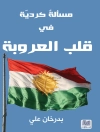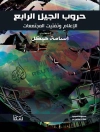This book is a collection of scientific studies regarding the biological, economic, historical, health, social, and other aspects of the populations of the western Balkans, a geographic area with distinct as well as diverse socioeconomic backgrounds, political systems, ethnic characteristics, development, and history. Through providing data analyses, statistical methodologies, and important applications, the book addresses and explores topics such as temporary migration and human resource availability, depopulation, and the immigration future, returning migrants, poverty, population dynamics and birth rate trends, reproduction and family creation, aging, mortality and health developments, and much more. As such, this book is of great importance in understanding the mechanisms of population change and dynamics in an European area and provides a valuable guide for researchers, policy makers, and practitioners from various disciplines.
Содержание
Chapter 1. Introduction.- Chapter 2. The demographic future of Western Balkans: between depopulation and immigration.- Chapter 3. Population ageing process and depopulation context in Western Balkans.- Chapter 4. Temporary migration and policy challenges in the Western Balkan countries — Serbia, Bosnia and Herzegovina, and North Macedonia perspectives.- Chapter 5. The evolution of family related behaviours in the Western Balkans and their impact on present and future family and population structures: an analysis concerning the period 1945-2050.- Chapter 6. Mortality and health developments in Bosnia-Herzegovina and Montenegro.- Chapter 7. Serbia: Policy response to demographic challenges.- Chapter 8. Spatial distribution of human capital in Serbia: empirical analysis with special reference to education.- Chapter 9. Challenges in getting old in Croatia.- Chapter 10. Albanian return migration in times of economic hardship.- Chapter 11. A spatial approach of migration and poverty in Albania: an inevitable correlation?.- Chapter 12. Nationals and foreigners fertility in a crisis environment, the case of Greece (2009-2020).- Chapter 13. Is a Future Upward Trend in Births a Realistic Policy Goal?.- Chapter 14. The impact of highly skilled returning emigrants on the origin country’s innovation performance: Evidence from Greece.- Chapter 15. Culture versus political and ecclesiastic legislation. A study on how Eastern Orthodox Easter customs and individual agency affect people’s health in Greece.- Chapter 16. Attitudes towards reproduction and creating a family among Albanian women – the case of Arachinovo municipality, North Macedonia.
Об авторе
Konstantinos N. Zafeiris is an associate professor of Demography in the Department of History and Ethnology, Democritus University of Thrace, Greece. He received his doctorate in demography after studying the demographic and biological profile of isolated populations. His research focuses on mortality, health, population modeling, fertility, and palaeodemography. He has also studied the demographic and genealogical structure of isolated populations in Greece from the point of view of anthropological demography.
Byron Kotzamanis is Demographer and Docteur es Lettres et Sciences Humaines at the University Paris X, France. He is Author, Co-author, and Editor of many books on demographic/population developments in Greece and the Balkans. He has also authored several papers in collective volumes examining issues of demographic policy, population projections, migration, mortality, family/fertility, as well as the spatial dimensions of demographic phenomena in Greece and the Balkans.
Christos H. Skiadas, Ph.D., was Founder and Director of the Data Analysis and Forecasting Laboratory at the Technical University of Crete, Greece, and served as Vice-Rector of the University. He is Chair of the Demographics Workshop series, the Applied Stochastic Models and Data Analysis Conference series and the Chaotic Modeling and Simulation Conference series. He has published more than 80 papers, three monographs, and 26 books, including probability, statistics, data analysis, and forecasting. His research interests include innovation diffusion modeling and forecasting, life table data modeling, healthy life expectancy estimates, and deterministic, stochastic, and chaotic modeling.












